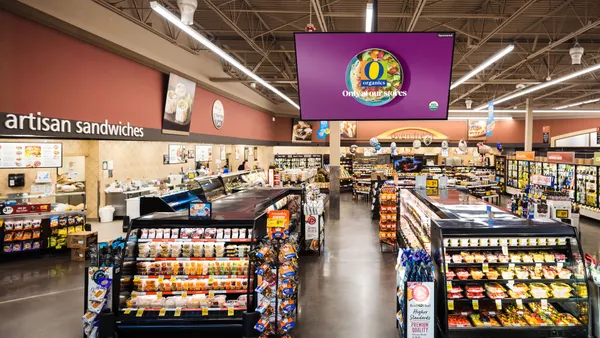Brief:
- Paramount Pictures and Little Caesars used 3D photo ads to boost their spring campaigns on mobile, per case studies shared with Mobile Marketer by ad-tech company OmniVirt. The firm's technology processed 2D images to create a 3D depth-of-field effect within a mobile web ad format.
- Paramount Pictures doubled its CTR from standard creative with a 3D ad for horror movie "Pet Sematary" that appeared as though an undead cat's eyes were following users as they scrolled through their smartphone screens. The campaign, which ran before the movie's April 5 premiere, saw a 100% return on ad spend (ROAS), according to one case study.
- Little Caesars boosted its click-through rate (CTR) 30% by using 3D images in ads that ran in May and June. The chain also saw a 25% dip in cost-per-order and 40% drop in eCPMs, per a separate case study.
Insight:
Little Caesars' and Paramount's results for mobile 3D ads demonstrate the potential effectiveness of a format that brings more depth to mobile screens than provided by standard ads.
The campaigns are another indication of how advertisers are spending more on mobile channels as people, especially young adults and teens who are key targets for fast food chains and movie studios, are shifting their media consumption to smartphones from more traditional channels. The percentage of U.S. adults 18 to 29 who mostly use a smartphone for online media rose to 58% this year from 41% in 2013, a survey by Pew Research Center found.
Facebook brought free 3D image technology to the masses with last year's introduction of 3D posts to its News Feed. However, the social network hadn't allowed 3D images to be "boosted" as sponsored posts as of last fall. While Little Caesars and Paramount likely have significant ad budgets for marketing campaigns, the results from their spring promotions demonstrate how the mobile ad format may appeal to small- and medium-sized businesses with limited media allowances.
The 3D photos feature is another example of how social platforms like Facebook, Instagram and Snapchat are ramping up their advertising capabilities to improve visual storytelling with video, photography and immersive tech like augmented reality (AR).
OmniVirt has promoted 3D Photos as a cheaper alternative to AR and virtual reality (VR) campaigns that require more development time. Much of OmniVirt's prior work with brands including Sony, Takis and Universal was centered on 360-degree video and banner ads. OmniVirt recently worked with Kmart Australia on a web-based AR campaign that was served programmatically. The retailer let people use AR to virtually decorate their homes with products sold at stores before a purchase. The demand for web-based immersive ad strategies may grow as users spend more time on mobile devices and as high-speed 5G service promises to bring faster download times to media-rich content like AR/VR.










